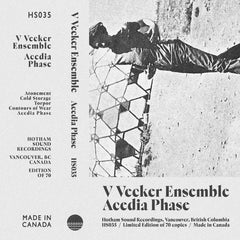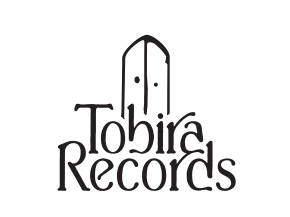Kristen Roos // Universal Synthesizer Interface Vol II TAPE
- Item no:
- Availability:
カナダのサウンドデザイナーKristen Roosが、2022年4月に同国Hotham Soundから70本限定でリリースしたカセットです。
1980年代のMIDI楽器を用いて制作したノスタルジックなIDM〜アンビエント6曲を収録。
毎度の如く版元即完ですのでお早めにどうぞ。DLコード付属。以下、レーベル解説です。
Hotham Soundは、パーソナルコンピュータ用の初期のアルゴリズムMIDIシーケンスプログラムのオーディオを探求するKristen Roosの「Universal Synthesizer Interface」シリーズの待望の第2巻を発表します。Vol.1では様々なヴィンテージのプログラムを紹介しましたが、Vol.2ではRoosの個人的なお気に入りを2つに絞っています。ローリー・スピーゲルの「ミュージック・マウス」とフランク・バルデの「ディアブロ」です。
パーソナルコンピュータ用に作られた最初の「インテリジェント楽器」の1つであるスピーゲルの「ミュージックマウス」は、1980年代の多くの人々にとって、MIDIシーケンスの世界に驚くほど直感的に入ることができるものでした。マウスの位置でMIDIデータの配置とパラメータを制御し、ユーザーは作品のスケール、コードボイシング、ボリュームをその場で素早く選択、変更することができます。キーボードはコントロールパネルとして使用され、ソフトウェアに付属するデジタル「チートシート」に様々なショートカットの概要が記載されています。このプログラムでは、4つのMIDIノートを出力することしかできませんが(その後、短い音楽フレーズやループに並べることができます)、この制約の中に、音楽のバリエーションと複雑さを生み出す膨大な容量が秘められています。Roosは軽いタッチでソフトウェアを演奏し、遊び心と正確さの微妙なバランスを保っています。
フランク・バルデの「Diablo」は、MacPaintのような初期のデジタルペイント・プログラムによく似たウィンドウに、文字通りMIDIデータを「描く」ことができます。ユーザーは、データをループに記録し、ノートのパラメータ(調性、長さ、ベロシティ、テンポなど)を変更し、その設定の「スナップショット」をキャプチャして、リアルタイムでクリックすることができます。このプログラムは、一度に3つのループに制限されていますが、ミュージックマウスのように、その制限の中に音楽表現のための驚くほど強力なツールが隠されているのです。Roosの手にかかると、繰り返されるループは、デジタル織機のパターンのように互いに重なり合い、絡み合い、ゆっくりと巨大な音のタペストリーに形成されていきます。
レーベルその他作品はこちら /// Click here to see more Hotham Sound Recordings releases available at Tobira.
--------------------------
Edition of 70 copies. Features 5-panel interior j-card.
Hotham Sound Recordings:
"Hotham Sound is pleased to announce the much-anticipated second volume of Kristen Roos’s 'Universal Synthesizer Interface' series; an ongoing audio exploration of early algorithmic MIDI sequencing programs for personal computers. Where Vol I showcased a wide variety of vintage programs, Vol II sees Roos narrowing his focus down to two of his personal favorites: Laurie Spiegel’s 'Music Mouse' and Frank Balde’s 'Diablo.'
One of the first ‘intelligent instruments’ ever created for the personal computer, Speigel’s 'Music Mouse' was, for many people in the 1980s, a remarkably intuitive introduction to the world of MIDI sequencing. Mouse position controls the placement and parameters of MIDI data, allowing the user to quickly select and alter the scale, chord voicing and volume of their work on the fly. The keyboard is used as a control panel, with various shortcuts outlined on a digital ‘cheat sheet’ provided with the software. While the program is limited to outputting four separate MIDI notes (which can then be ordered into short musical phrases or loops) within these constraints lies an enormous capacity for musical variation and complexity. Roos plays the software with a light touch, maintaining a delicate balance between playfulness and precision.
Frank Balde’s 'Diablo' allows for MIDI data to be literally ‘drawn’ into a window very similar to early digital paint programs like MacPaint. The user can then record the data into loops, alter the note parameters (tonality, duration, velocity, tempo, etc), and capture ‘snapshots’ of their settings that can then be clicked between in real time. The program is limited to three separate loops at a time, but like Music Mouse, its limitations conceal a surprisingly powerful tool for musical expression. In Roos’s hands, the repeating loops overlap and intertwine with one another like patterns on a digital loom, slowly forming themselves into enormous tapestries of sound. "
Artist : Kristen Roos
Label : Hotham Sound Recordings
カナダのサウンドデザイナーKristen Roosが、2022年4月に同国Hotham Soundから70本限定でリリースしたカセットです。
1980年代のMIDI楽器を用いて制作したノスタルジックなIDM〜アンビエント6曲を収録。
毎度の如く版元即完ですのでお早めにどうぞ。DLコード付属。以下、レーベル解説です。
Hotham Soundは、パーソナルコンピュータ用の初期のアルゴリズムMIDIシーケンスプログラムのオーディオを探求するKristen Roosの「Universal Synthesizer Interface」シリーズの待望の第2巻を発表します。Vol.1では様々なヴィンテージのプログラムを紹介しましたが、Vol.2ではRoosの個人的なお気に入りを2つに絞っています。ローリー・スピーゲルの「ミュージック・マウス」とフランク・バルデの「ディアブロ」です。
パーソナルコンピュータ用に作られた最初の「インテリジェント楽器」の1つであるスピーゲルの「ミュージックマウス」は、1980年代の多くの人々にとって、MIDIシーケンスの世界に驚くほど直感的に入ることができるものでした。マウスの位置でMIDIデータの配置とパラメータを制御し、ユーザーは作品のスケール、コードボイシング、ボリュームをその場で素早く選択、変更することができます。キーボードはコントロールパネルとして使用され、ソフトウェアに付属するデジタル「チートシート」に様々なショートカットの概要が記載されています。このプログラムでは、4つのMIDIノートを出力することしかできませんが(その後、短い音楽フレーズやループに並べることができます)、この制約の中に、音楽のバリエーションと複雑さを生み出す膨大な容量が秘められています。Roosは軽いタッチでソフトウェアを演奏し、遊び心と正確さの微妙なバランスを保っています。
フランク・バルデの「Diablo」は、MacPaintのような初期のデジタルペイント・プログラムによく似たウィンドウに、文字通りMIDIデータを「描く」ことができます。ユーザーは、データをループに記録し、ノートのパラメータ(調性、長さ、ベロシティ、テンポなど)を変更し、その設定の「スナップショット」をキャプチャして、リアルタイムでクリックすることができます。このプログラムは、一度に3つのループに制限されていますが、ミュージックマウスのように、その制限の中に音楽表現のための驚くほど強力なツールが隠されているのです。Roosの手にかかると、繰り返されるループは、デジタル織機のパターンのように互いに重なり合い、絡み合い、ゆっくりと巨大な音のタペストリーに形成されていきます。
レーベルその他作品はこちら /// Click here to see more Hotham Sound Recordings releases available at Tobira.
--------------------------
Edition of 70 copies. Features 5-panel interior j-card.
Hotham Sound Recordings:
"Hotham Sound is pleased to announce the much-anticipated second volume of Kristen Roos’s 'Universal Synthesizer Interface' series; an ongoing audio exploration of early algorithmic MIDI sequencing programs for personal computers. Where Vol I showcased a wide variety of vintage programs, Vol II sees Roos narrowing his focus down to two of his personal favorites: Laurie Spiegel’s 'Music Mouse' and Frank Balde’s 'Diablo.'
One of the first ‘intelligent instruments’ ever created for the personal computer, Speigel’s 'Music Mouse' was, for many people in the 1980s, a remarkably intuitive introduction to the world of MIDI sequencing. Mouse position controls the placement and parameters of MIDI data, allowing the user to quickly select and alter the scale, chord voicing and volume of their work on the fly. The keyboard is used as a control panel, with various shortcuts outlined on a digital ‘cheat sheet’ provided with the software. While the program is limited to outputting four separate MIDI notes (which can then be ordered into short musical phrases or loops) within these constraints lies an enormous capacity for musical variation and complexity. Roos plays the software with a light touch, maintaining a delicate balance between playfulness and precision.
Frank Balde’s 'Diablo' allows for MIDI data to be literally ‘drawn’ into a window very similar to early digital paint programs like MacPaint. The user can then record the data into loops, alter the note parameters (tonality, duration, velocity, tempo, etc), and capture ‘snapshots’ of their settings that can then be clicked between in real time. The program is limited to three separate loops at a time, but like Music Mouse, its limitations conceal a surprisingly powerful tool for musical expression. In Roos’s hands, the repeating loops overlap and intertwine with one another like patterns on a digital loom, slowly forming themselves into enormous tapestries of sound. "
Artist : Kristen Roos
Label : Hotham Sound Recordings
Related Products
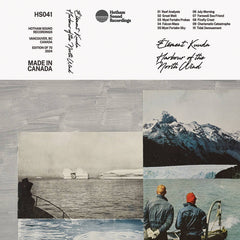
You may also like:
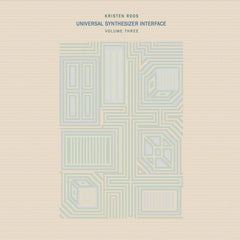
You may also like:
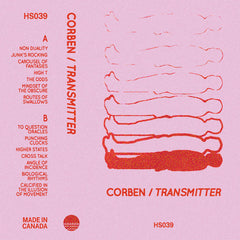
You may also like:
